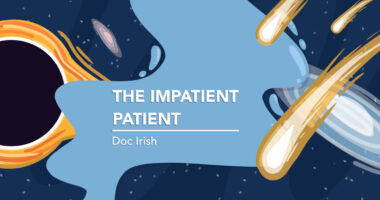Gene Therapy in Clinical Trial, AXO-Lenti-PD, Safe And Effective in Monkey Model of Parkinson’s, Study Says

The experimental gene therapy AXO-Lenti-PD (OXB-102) was seen to be both safe and effective in a primate model of Parkinson’s disease, a study reported, supporting a clinical trial getting underway in patients.
The findings were published in the journal Molecular Therapy Methods & Clinical Development in the paper, “Gene Therapy for Parkinson’s Disease: Preclinical Evaluation of Optimally Configured TH:CH1 Fusion for Maximal Dopamine Synthesis.”
Parkinson’s disease is caused by a lack of the neurotransmitter dopamine in the brain as a consequence of the degeneration of dopamine-producing neurons. Oral dopamine replacement therapies (e.g., levodopa) can provide symptom relief, but their benefits tend to weaken — and unpleasant side effects multiply — when used over a long period.
The idea behind gene therapy for Parkinson’s is that, rather than swallowing a pill to get more dopamine, cells in the brain could be engineered to make more on their own. One such therapy, called ProSavin, demonstrated promising results in early clinical trials — but data also suggested that this gene therapy didn’t increase dopamine production enough for maximum benefit.
Like ProSavin, AXO-Lenti-PD gene therapy takes the form of a virus that has been modified to deliver a genetic payload that lets cells make more dopamine. But for AXO-Lenti-PD, the particular coding “instructions” have been optimized to get the most dopamine production possible. The therapy is administrated surgically directly into the brain.
AXO-Lenti-PD, developed by Oxford Biomedica and Axovant, is currently being evaluated in the SUNRISE-PD (NCT03720418) Phase 1/2 clinical trial that is enrolling patients at sites in England and France. To date, a single dose of AXO-Lenti-PD is reported to be well-tolerated and to have improved motor function after six months in two people with advanced Parkinson’s disease.
In this preclinical study, researchers induced Parkinson’s-like symptoms in macaques using a compound called MPTP. The monkeys were then treated with either a high or low dose of AXO-Lenti-PD, or with ProSavin or a control vector. (Oxford Biomedica also developed ProSavin.)
Compared to animals in the control group, those given an active gene therapy showed significantly fewer parkinsonian symptoms at three and six months post-treatment. Although there were no statistically significant differences between the three treatment groups in terms of clinical scores, animals that received the high dose of AXO-Lenti-PD had higher motor scores than the ProSavin-treated animals at three and six months post-treatment.
Furthermore, assessment of the macaques’ brains suggested that those treated with either dose of AXO-Lenti-PD produced significantly higher levels of aromatic L-amino acid decarboxylase (AADC, an enzyme that helps in the production of dopamine) than those treated with ProSavin. The highest AADC expression was found in the high-dose AXO-Lenti-PD group, suggesting that this group had the most dopamine production (although this was not directly assessed).
AXO-Lenti-PD’s use also appeared to be safe. “Over the 26-week observation period, OXB-102 was demonstrated to be well tolerated and with no clinical signs or abnormal observations noted,” the team wrote.
Researchers did note that all animals given the investigational gene therapy developed antibodies against its viral vector, which may be a concern. Antibody development means that, if the vector were to be used again, it would likely be less effective because the body would fight it.
“In conclusion,” the researchers wrote, “the results achieved in these pre-clinical studies demonstrate the efficacy and safety of an enhanced dopaminergic lentiviral vector, OXB-102, and strongly support the clinical evaluation in patients with [Parkinson’s disease].”






